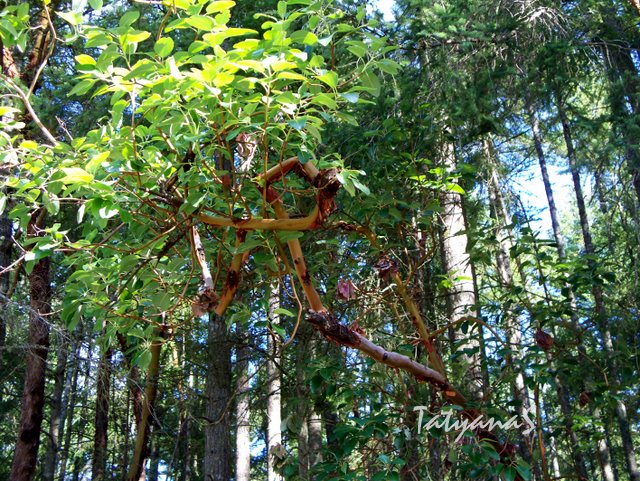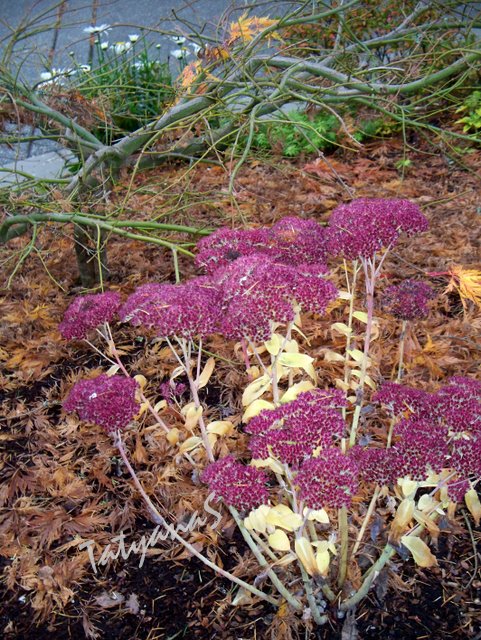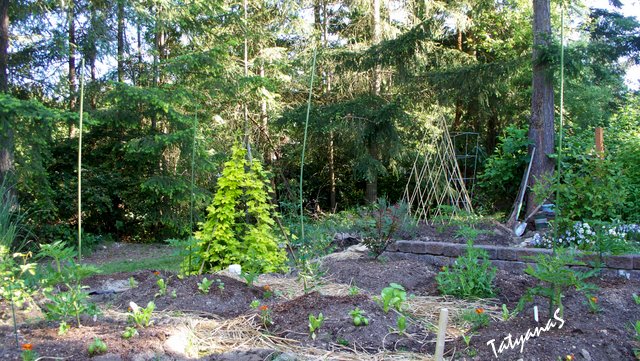 Picture May 2009
Picture May 2009There are two locations for vegetables in my garden:
1. Little kitchen garden behind the garage:
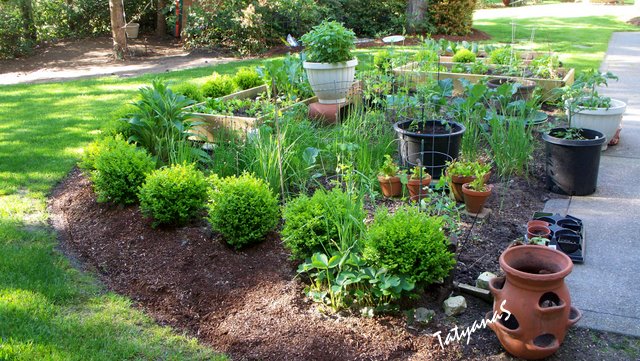
Picture May 2009
2. Perennial/vegetable bed, so called Terrace Garden:
 Picture June 2009
Picture June 2009  Terrace Garden. Picture June 2009
Terrace Garden. Picture June 2009 Main types of vegetables, how they performed last season and what I should remember for the next year (if I remember to look at this post in spring, ha-ha!):
Potatoes. The biggest potatoes were harvested from the plants which grew near the bean tower and the row of peas. Is it because leguminous plants have a special relationship with nitrogen-fixing bacteria Rhizobium? I had potatoes planted in different locations. It wasn't a planned planting. All planted potatoes were store-bought sprouted potatoes which we didn't eat in time. I put some on the raised bed, some between other vegetables, and just for fun, some in a big black nursery plastic container and a burlap sack. The worst performance - sack potatoes (probably, because I didn't add a lot of soil to encourage vine's growth). Good fingerling potatoes came from a raised bed.
A couple of giants can be seen on the picture below. They grew near the row of peas.
 Fingerling PotatoesWarning for myself
Fingerling PotatoesWarning for myself: watch where you plant potatoes! This year I had quite a scare when I realized that I put some of them too close to tomatoes. This is a no-no combination.
Tomatoes. 22 plants.
Tomato harvest was very good! Extra tomatoes were given to the teachers in our boys' school, neighbors and friends. Some tomatoes were cut, placed in plastic bags and frozen for winter preparation of an egg dish (
Better Than Growing Vegetables ).
Sun gold was a champion. The plant grew in full sun, although half-blocked by the hops. In diameter, the plant was more than 12 feet (4 meters):
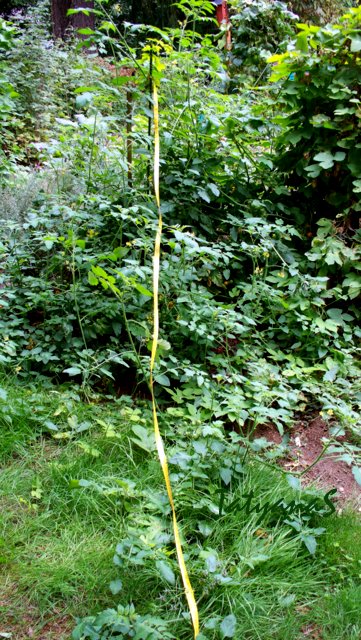 Measuring a Sun gold plant. Picture October 2009
Measuring a Sun gold plant. Picture October 2009
Early Girl: This girl is never early in my garden. Taste is OK.
Black Krim (Black Krim. My Picture Of The Day): favorite this year.
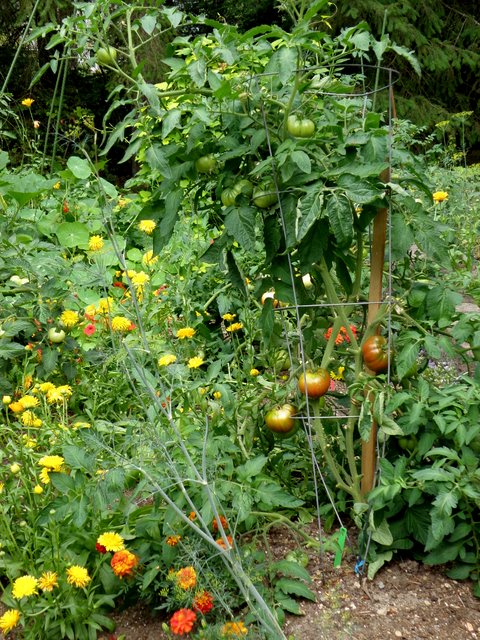 Black Krim
Black KrimThe trick is to eat it before it gets soft and mushy. Its dark color makes it very difficult to guess when it's just right for eating, but the flavor is good.
Other types of tomatoes with the same issue -
Black Zebra (picture below) and
Green Zebra. I don't think I'll plant them again. They look funny and help to make a colorful tomato display, but we were not excited about their taste.
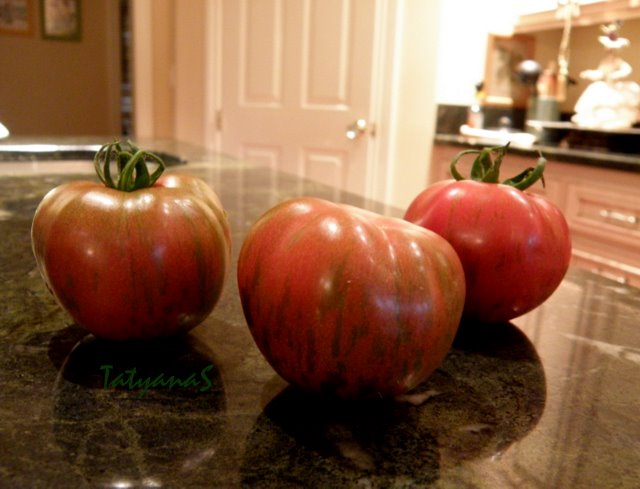 Black Zebra
Black Zebra
Grushovka (picture below). Russian heirloom. Nice pear (or heart) shape, pink. Grusha means a pear in Russian, but I would say its shape reminds me more of a heart than a pear.
 Grushovka
Grushovka
Grew in container. I wasn't crazy about its taste. I might try to plant it in a sunnier spot and open soil.
 Grushovka
Grushovka
Paul Robson. Russian heirloom. It reminds me of Black Krim a lot. Not bad.
As often happens, one of the best performers was an unknown type. I got several plants from a school parent. She grew them in her greenhouse, but didn't know the name. Just tomatoes, she said. Well, those Just Tomatoes happened to be heavy producers. Here is the picture:
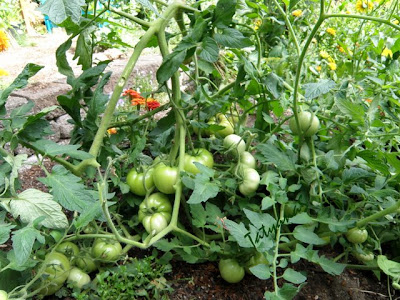 Unknown tomato
Unknown tomato
Spitz . Grew in a container. Interesting shape, not bad taste, very few fruit. Might try to grow it in soil next time.
Taxi. A lot of fruit, taste is OK.
Stupice (picture below) Small fruit, but sweet! Might try again next year in soil.
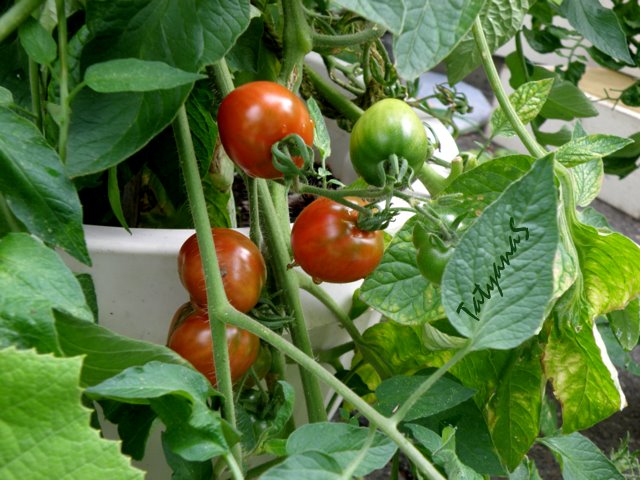 Stupice
Stupice
Beef (picture below). Good as always. Not as big as I had in Missouri with its hot hot summers, but reliable flavorful tomato.
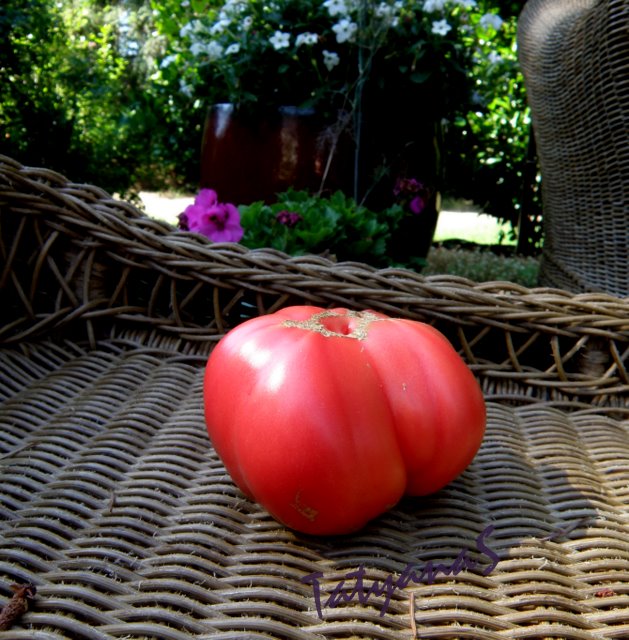
Beef
Legend was a heavy producer.
Reminder: Buy new sturdy supports for tomatoes! Wire supports and metal stakes weren't able to hold heavily loaded plants. Tons of tomatoes were eaten by slugs.
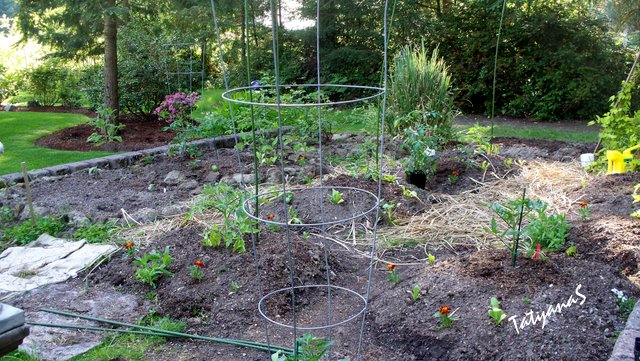 Picture May 2009
Picture May 2009
Beans. Pat myself on the shoulder for planting in different times. It allowed us to eat them for three months.
Dill. I love dill. Did good spreading the seeds all over the vegetable and perennial garden. Boys like to eat it straight from the beds, and it looks good among flowers.
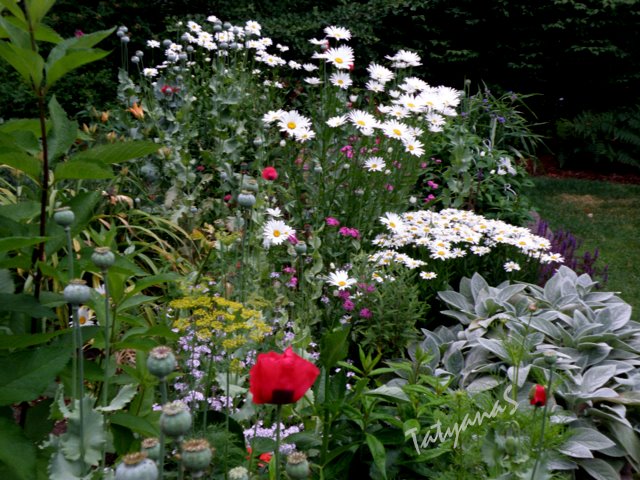
Cucumbers were not as abundant as in some previous years. Should I change locations?
Pumpkins. The biggest one, 64 pounds, we had in 2006. Then, they consistently went down in size and weight. I might try to throw several seeds on the side of our compost pile next year. Big or not, they make good decoration for Halloween.
Zucchini squash. Good when cooked on the grill.
Next year: Plant less zucchini or plant the same number but learn how to bake squash bread.
White cabbage. Good. Love it not only for the taste, but its look too. What beautiful shape and color! My boys love a salad which I make using cabbage, tomatoes and onions, plus some salt and olive oil or other oil. They call it Russian salad, although my husband calls it Russian slaw. It's easy to make and it's very healthy.
 Lettuce. Plant earlier!
Lettuce. Plant earlier!
Next year:
- Plant more parsley, beets!
- Continue to inter plant vegetables with Nasturtiums , French Marigolds and Calendula.
 Picture July 2009
Picture July 2009
All in all, it was a good season.
This is one of the meals made from our own ingredients: sockeye salmon caught in July in Alaska, potatoes and green beans:

P.S. I started this post a while ago. Then, I got carried away by all the lovely autumn colors and postponed this vegetable garden post. A recent comment prompted me to finish it, at last. That comment also helped me to realize that some of the fellow bloggers are more interested in my garden than in my travel and other non-garden posts.
I am not a great vegetable gardener, I don't do everything scientifically, but somehow I manage to feed our family with fresh homegrown veggies and share with other people too. Thank you for your past and future comments and please don't hesitate to jerk me back to the earth if I start flying too high and too long in the dreamy clouds of my trips.
P.S.P.S. When my husband read this post, he said he would rename it "Vegetable Garden: Menopause". How rude!
Copyright TatyanaS











